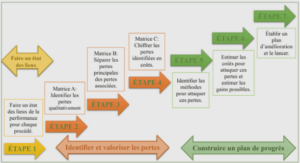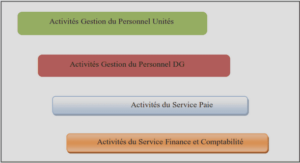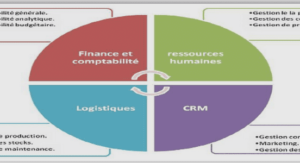Languages Varieties and Social Structure:
Language, Dialect, and Variety:
he phrase variety of language is used to refer to different manifestations of language. What make one variety of language distinct from another are the linguistic items that are involved in the language. The three important elements that represent the varieties of language are: language, dialect, and variety; these terms are close to each other especially language and dialect which are regarded as non technical terms.
Language was defined differently according to its users, for instance, poets say that language acts as an artistic medium, while philosophers define it as a means of interpreting human life and experience, and sociologists see it as a way of communication and language teachers regard it as a system that comprises a set of skills. The complexity of language is correlated to human life such as: society, culture, mind, and thoughts and the study of each of these associated with language leads to the birth of a discipline, for example, language with society leads to Sociolinguistics.
Sapir (1921:7), on his side, describes “language” as: “a purely human and non instinctive method of communicating ideas, emotions, and desires by means of voluntarily produced symbols”. For Sapir language is a human property of expressing ideas and feelings, it is in fact a system of symbols of which only the spoken form is mainly important, it also serves as the most important part of people’s culture and a means of preserving that culture and transmitting it through generations.
There have been many theories which propose the origin of language, the exact origin of language is never found but some theories helped as lines of development, some regards the origins of language as a matter of God when he gave Adam the capacity to speak a fully Pledged language, other theories remain unable to explain the origin of language but at least they agree that in primitive times language has developed from a basic need to communicate.
Storck and Widdowson (1974:15) say in this respect that man: “is a social animal using language to communicate in such a way that it is indispensable to the maintenance of his culture” Finding an exact definition for “dialect”, was the main trouble of sociolinguists, it is regarded as a sub-division of language which varies from other varieties grammatically, lexically, and phonologically, it is generally associated with privilege, low status, and has no official prestige like Black English Vernacular. We might refer to a linguistic variety which is not standard and has no written form as dialect, in contrast language is the standard written form and used in official setting. In the case of the Algerian speech community MSA is the standard form of Arabic, most prestigious, correct and the appropriate variety of school, media, religion and other public domains, leaving the other local and regional varieties for every day communication.
The variety spoken in a given geographical area is called a regional dialect, however geographical boundaries are not always trusted in defining limits of variation; people move from one region to another taking their original dialects with them, and this in turn means that there is a “geographical mobility”. In fact geography is not the only relevant factor in determining dialect boundaries, Britain, for instance, takes social class over geography as a determinant of speech variation.
Size and prestige, for many sociolinguists a key of differentiation between language and dialect, that is language is both larger and more prestigious than dialect. Hudson (1996:32) says in this respect: “…a language is larger than a dialect. That is, a variety called a language contains more items than one called a dialect […] the other contrast between language and dialect is a question of prestige, a language having prestige which a dialect lacks.”
In this sense Standard Arabic, for example, contains a large number of terms than its various local dialects. People usually may not find a problem in recognizing what language they speak, sometimes they even have the ability to decide whether it is a dialect or a language they speak, yet they may face a difficulty in explaining what is the different between language and dialect. Haugen (1966) points out that both language and dialect are ambiguous terms, but ordinary people use them quite freely in speech arguing that dialect for them is almost not more than a local non prestigious variety of a language, in contrast scholars frequently experience a substantial confusion in deciding which term should be used rather than the other in particular situations. He adds that while speakers of English ignored the concept of “patio” in the description of language, they have tried to employ both of “language” and “dialect” in a number of conflicting scenes, dialect is used for both local varieties of English and for different types of informal, lower class, and rural speech. Haugen (1966:924-925) concludes that: “In general usage it therefore remains quite undefined whether such dialects are part of the language or not. In fact, the dialect is often thought of as starting outside the language…as a social norm, then, a dialect is excluded from polite societies.”
Social structure
Dialectologists, anthropologists and some linguists have tried effectively to explain the noticeable synchronic language variation in relation to social factors, they give a theoretical importance to the study of language in its social context, and the development of this view was behind the progress of a new discipline called ‘Sociolinguistics’. Such a recent field of investigation started to throw light on the nature of language and on the society, but also to describe how different sociallydefined factors are tightly correlated with linguistic variability Hymes (1971) writes in this respect: “Concepts that are unquestionably postulated as basic to linguistics (speakerlistener speech community, speech act, acceptability, etc.) are, as we see in fact socio-cultural variables, and only when one has moved from their postulation to their analysis can one secure the foundations of linguistic theory itself” (Hymes ,1971: 277) .
Certainly, in an attempt at proving that in any speech community mono-, bi- or multilingual, linguistic variability is the rule, Weinreich, Labov and Herzog (1968) agree in writing: “One of the corollaries of our approach is that in a language serving a complex (i.e. real) community, it is absence of structure heterogeneity that would be dysfunctional.” (Weinreich, Labov and Herzog, 1968:101) It is exactly this ‘structured heterogeneity‘ that today’s sociolinguists are trying to throw light upon, and their findings result from explorations based on social perception, and thus they go beyond the subject matter of linguistic theory, Pride (1970) explained : “Language is very frequently the whole social behaviour of the moment” (Pride, 1970: 289) Though ,while in certain speech communities the sociolinguistic behaviour of an upper class speaker presents a similar one to what is considered as standard language, in other communities there is a wide gap between everyday speech and the standard, or written form, in other words and according to the structural theory of language, while in western speech communities the standard form of language is used in everyday setting by a number of speakers mainly from the higher social class, in diglossic situations such as in Arabic-speaking communities there seems to be no ideal speaker-listener (in Chomsky’s sense ), because Cl. Ar has almost no native speakers, thus as we shall see below in chapter 2, the relation between Cl .Ar and its low varieties is far from being comparable to such contrast as spoken/standard English: indeed an English educated middle class speaker will usually say “they ‘re walking“ whereas a lower class speaker might say “they walking” the two utterances do not differ to a great extent and are mutually understood by both types of speakers . But in Arab- speaking communities there is often a clear-cut difference between a Cl Ar utterance and the corresponding one in a low variety :the sentence in Cl .Ar / inahoum ya3maloun/ , “they are working” is said “rahou kaykhadmou “ in Béchar and “ rahoum yakhadmou” in Oran .
I-General introduction |





